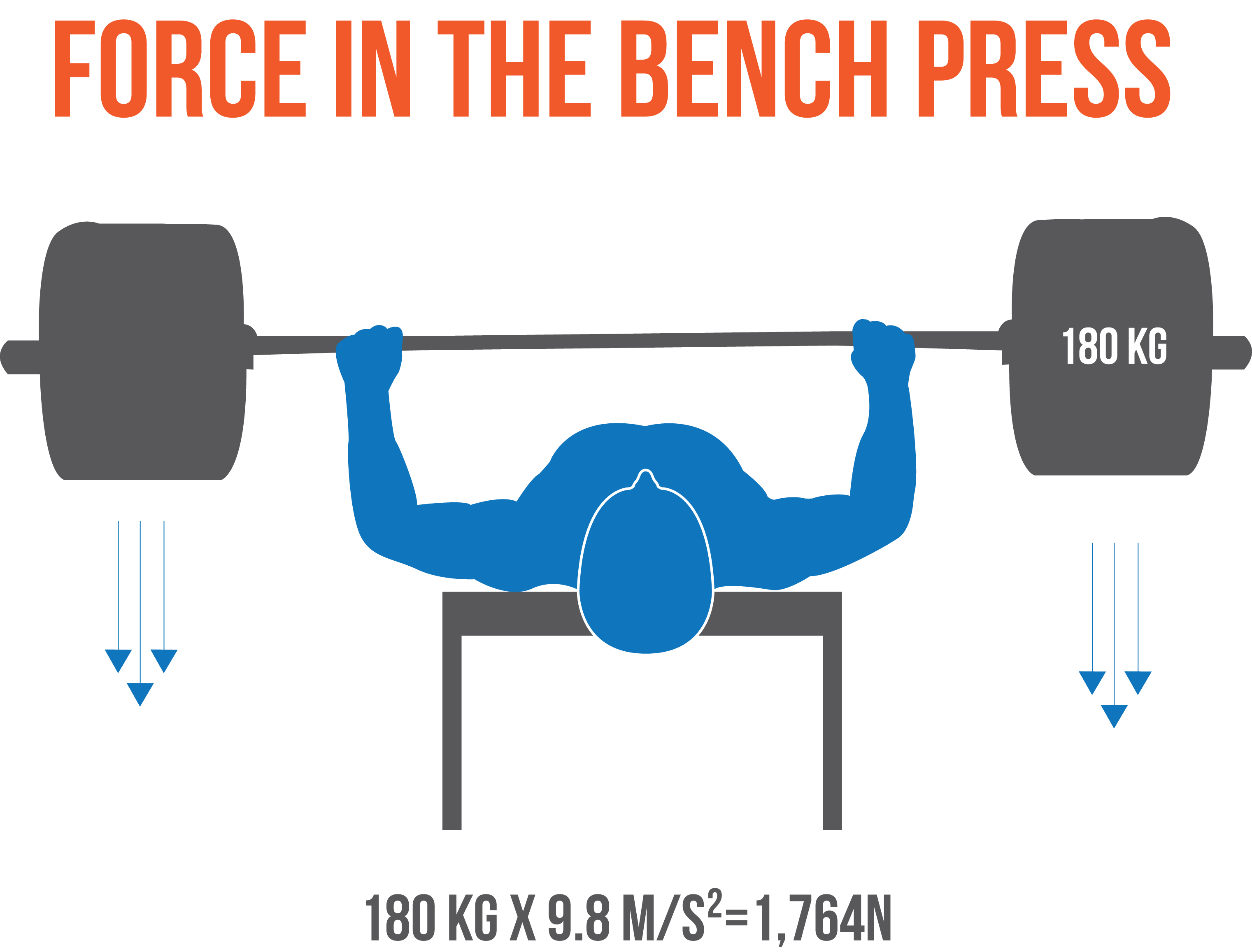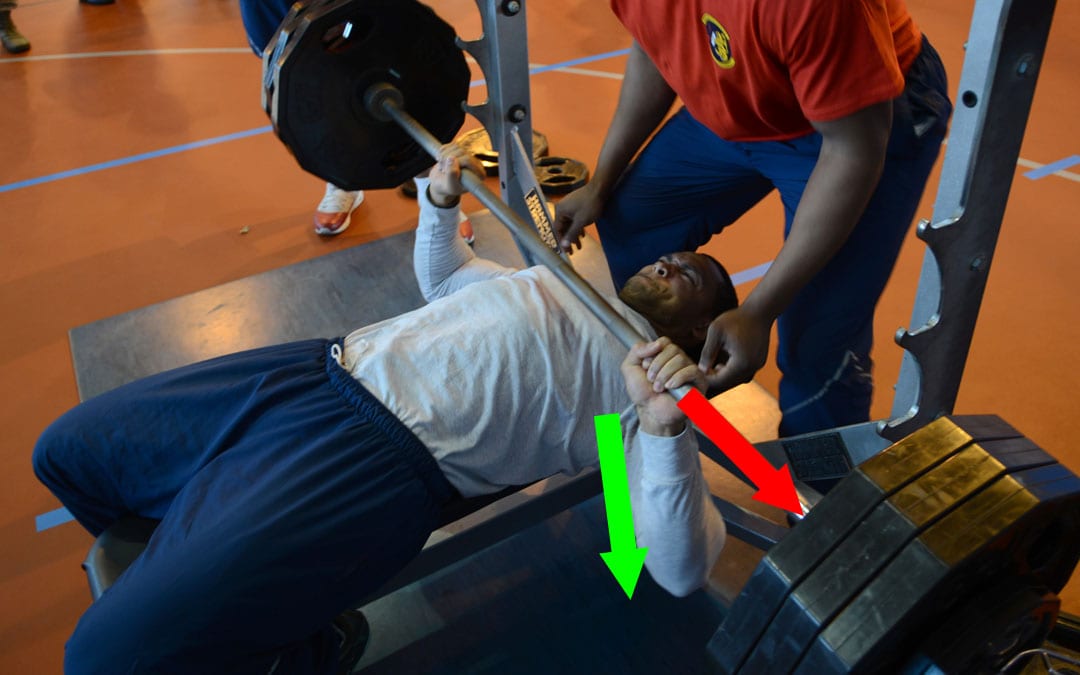2 days ago Max Bench Press (bodyweight) Max Pull-Ups Perform As Many Repetitions as Possible (AMRAP), unbroken, of Bench Press. Rest as needed before completing as many Pull-Ups as possible, unbroken. Continue in this manner for 5 rounds. Score is the total cumulative number of repetitions of Bench Press and Pull-Ups across all 5 rounds of the workout. Setup is key for a big bench press. 10×3 — same total volume. The latter allows more practice setting up and more first reps — the only ones that count in a powerlifting competition. 20 years old, 170, and i can press 110 pounds. My goal is to actually bench my own weight but what do you think of 110? I can do about 4 reps and like 3,4 sets of that.
Here's what you need to know...
- You should train your bench press and groove proper bench technique several times a week.
- Push the bar forcefully all the way from the bottom to lockout. You should do this on every single rep you do.
- To be a great bencher, forget other pressing exercises for a while and focus only on the bench.
- Only beginners can bench press heavy every time they train and still make progress. Advanced lifters need to train smarter.
The Lost Art of the Bench Press
It never ceases to amaze me the number of exercises some people do for chest – inclines, declines, flyes, cables, dumbbells, dips, pec deck, and machine presses done once a week. Lots of reps and sets and most done to failure.
No wonder you can't bench more than once a week this way. Your perpetual soreness is as much a reality as your lack of bench press progress. There are many roads to bench press heaven, but the preceding is not one of them.
This is what you need to do:
- Improve your bench press style and technique
- Train the bench press more often
- Train fewer lifts
Bench Often, Bench Optimally
You should train your bench press and groove proper bench technique as often as possible.
Of course, claiming that high frequency benching is the only way to a massive bench is an outright lie, but it's a fact that the more often you train a movement, the better you get at it.
Neural pathways stimulated frequently lead to improved technical skills and a more efficient nervous system. You increase your chances of success by training more frequently.
Attention to detail is another important aspect of becoming a better bencher. There's no use training the bench press five times per week unless the lowering and pressing of the bar is done with laser-like precision.
11 Bench Press Guidelines
Due to anatomical differences in leverage, the way one good lifter bench presses might not fit another, but there are still certain guidelines that work for almost all lifters:
- Inhale as much air as possible.
- Make your ribcage as large as possible after having sucked in all that air.
- 'Push/pull' the tip of the sternum as high up in the air as you can. This is the point where the bar will hit on your chest/upper abs. Big, shirted lifters will usually lower the bar farther down onto their big guts. Raw benchers and leaner lifters will find their sweet spot a little higher up, usually close to the nipple area.
- Pull your shoulders and scapulae as far back as you're able to and then down towards your glutes. Keep them there. This will activate your traps, rhomboids and lats, which makes it easier to find and keep the proper bar path.
- As you grab the bar with your hands at the desired grip width, place your feet as far back as possible, keeping the soles of your feet firmly planted on the floor. Flex your erectors, glutes, legs, and calves. You should now feel tight.
- Get some help from an experienced liftoff-guy who knows the importance of giving you a good liftoff, which doesn't consist of unracking the bar forcefully so your shoulders are pulled out of position. Dropping the bar fast over your face or giving it horizontal speed doesn't cut it, either. Nice and easy is how you want it handed to you.
- At this point, with the bar at arms length, some lifters need to let go of a little air and then fill up again. For God's sake, don't lose the arch, the massive abdominal pressure, and the tension you've built up. When doing a proper set-up by bridging your body and pulling your scapula back and down, you store energy by creating tension in your muscles and even the fascia surrounding them. This creates more force when pressing the bar and better shoulder stability, which makes for much safer lifting.
- Tuck your elbows. Some lifters tuck a little, some tuck a lot. This is something you have to experiment with. The bar is supposed to travel in a slight arc down to the spot on, or close to, the tip of the sternum.
- Pause the bar on the chest. It'll save your shoulders from a lot of wear, tear, and trouble down the road.
- Now it's time to push the bar up again, and you need to push it like you mean it. Some prefer to ram their feet/heels into the floor a split second before they start pressing, while others prefer to just focus on keeping the tension throughout the body. The bar should travel in a slight arc towards your face. The elbows need to be flared somewhat at exactly the right time in order for the bar to travel in the desired path, so you don't get stuck in mid-air. Where this elbow flare takes place depends on your leverage. Learn to get a feel for where and when this has to happen. Practice, practice, practice.
- Press the bar to lockout. Time to let go of some air, but not all of it.
With Utmost Respect and an Eye For Detail
Check out bench pressers who have taken their technique and style to a very high level. Swedish lifter Stefan Jamroz comes to mind or pretty much any top level Japanese bench presser.

They have really badass lifting style and technique. They treat their bench press like a great artist treats a painting – with utmost respect and an eye for detail.
Some benchers are naturally fast and explosive due to great leverage and muscles made up of predominantly quick and strong type IIb fibers, while others aren't as fortunate. However, everybody can still train and practice this skill to the best of their abilities.

I remember seeing Russian bench presser Vladimir Volkov press a world record weight so fast that it shot off his chest with a speed similar to Putin's MIG fighters. I talked to Vladimir, 50 years old at the time, about the importance of pressing the weight as fast as possible. 'Maksijmum force,' he answered in Russian-English.
Despite the communication problem, the message was clear: Bench press with maximum force whether you're lifting sub-maximum or maximum poundages.
Similarly, talks of not only exploding the bar off the chest, but also continuously accelerating the bar.
You should attempt to push the bar forcefully all the way from the bottom up to lockout. You should do this on every single rep you do, except for the warm-ups.
This will teach your nervous system to fire on all 'spark plugs,' telling your Golgi tendon organs to back off and not inhibit the speed of the bar.
A Championship Program
Please get rid of the notion that to get stronger you have to bench heavy every time you train the lift. This is simply not true, and only beginners can push to their (limited) limits every time they lift – for a short period of time.
Progressive weight training is all about putting more weight on the bar. However, you should keep this as a long-term goal, not one that's attained every single training session.
Vary the intensity and total volume and keep frequency high. Do a heavy training session every three weeks.
Below is an excellent program used by Gunda Fiona Sommer-von Bachhaus in preparation for the 2014 European Bench Press Championships where she benched 175kg (385 pounds) at 63kg (139 pounds), making her the best female bench presser in IPF history.
Warm-ups aren't listed, but in general do 2-4 sets of progressively heavier fives, but lighter than the percentages listed.
Start out with two sets of the prescribed daily lifting dosage and then increase to three sets after 2 or 3 three-week cycles.
Week 1
Day 1: Test your 1RM raw bench, then do a repetition max with 85% of your 1 RM
Day 2: 2-3x5 reps at 55% of 1RM
Day 3: 2-3x5 reps at 65% of 1RM
Day 4: 2-3x5 reps at 50% of 1RM
Day 5: 2-3x5 reps at 65% of 1RM
Week 2
Day 1: 2-3x5 at 70% of 1RM
Day 2: 2-3x5 at 55% of 1RM
Day 3: 2-3x5 at 65% of 1RM
Day 4: 2-3x5 at 50% of 1RM
Day 5: 2-3x5 at 65% of 1RM
Week 3
Bench Press Max Chart
Day 1: 2-3x5 at 70% of 1RM
Day 2: 2-3x5 at 55% of 1RM
Day 3: 2-3x5 at 65% of 1RM
Day 4: 2-3x5 at 50% of 1RM
Day 5: 2-3x5 at 65% of 1RM
Week 4

- Test your 1 RM and adjust percentages accordingly. Alternatively, do another repetition max with 85% of your 1RM.
- If you managed 5 reps with this weight 3 weeks ago, then attempt 6 reps today. Every 3 weeks attempt a rep increase with this weight. When you can do 8 reps at this weight, then test your 1 RM next time around in your 3-week cycle.
- You'll probably beat your 1RM, and then it's time to adjust your percentages!
Simplicity (and Frequency) is the Name of the Game
'I fear not the man who has practiced ten thousand kicks, but I fear the man who has practiced one kick ten thousand times.' – Bruce Lee
That describes really well what it takes to become a really good bench presser. You have to bench, bench, and then bench some more. Forget other pressing exercises for a while and focus only on the bench.
German bench presser, Markus Schick, is one of a very select few benchers who's had world records in five different weight classes. What exercises does he do? Well, he benches.